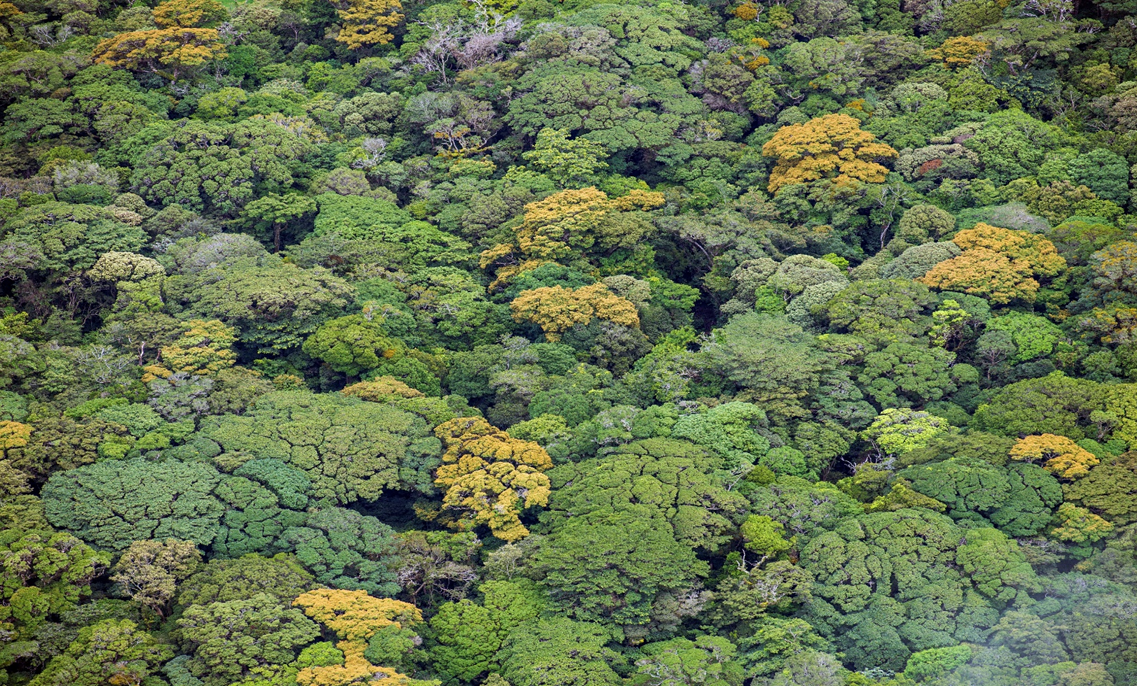Expanding the population of Ocotea monteverdensis by promoting natural regeneration, September, 2020
Conservation of the Critically Endangered Ocotea monteverdensis and other threatened species in Costa Rica
Third Blog in Series: “Expanding the population of Ocotea monteverdensis by promoting natural regeneration, September, 2020”
In our previous two blogs we have discussed the mutualism that exists between the critically endangered tree species Ocotea monteverdensis and the large frugivorous birds of the Monteverde zone’s ecosystem. We have also described the goals of the Mi Ocotea project, including protection of mature trees, promotion of an increased and more widely spread population, and education of the public about its importance.
Read our second blog: http://monteverde-institute-blog.org/blog/2020/6/4/taking-care-of-ocotea-monteverdensis-in-the-middle-of-the-pandemic-june-2020
Project Mi Ocotea aims not only to protect the planet’s remaining 800 mature Ocotea monteverdensis trees that are found in the Monteverde zone and adjacent areas, but also to increase the population of this species and the area where they can be found.
O. monteverdensis flowering (yellow) in canopy of primary forest. Photo by Giancarlo Pucci, Magical Trees Foundation
Two methods to accomplish this population increase are (a) planting seedlings and (b) encouraging natural regeneration. The former is a well-established approach that some members of this Mi Ocotea partnership have been practicing for over 20 years.
Carlos Alberto Camacho, planting O. monteverdensis at forest edge in their family property.
Promoting natural regeneration (PNR)
The latter approach—promoting natural regeneration—is less well-known and less understood. PNR involves locating seedlings and saplings that have begun growing naturally in appropriate locations. The seeds of these young trees have typically been dispersed by frugivorous birds and, following germination, have succeeded in self-establishment. They have usually been growing for 2 to 10 years, during which time they have developed a serviceable root system.
An old Chinese saying states, “The best time to plant a tree is 20 years ago.” In a sense, the natural regeneration approach is taking that proverb to heart, by working with trees that already have a head start of 2-10 years, compared to seedlings being planted at the same time.
Our studies and field observations over the past 6 years have indicated that, in the understory environments where we find most natural regeneration, light appears to play an important role in the health, growth, and survival of young O. monteverdensis trees. A study by Jessica Sciara and Christie Fite (2015) revealed a positive correlation between O. monteverdensis seedling density and canopy openness (p = 0.03). They also demonstrated that O. monteverdensis seedlings are generally healthier when understory cover is minimized (p = 0.01).
Our “active” method of “promotion” of natural regeneration of these young O. monteverdensis trees involves providing each young tree we find with additional light, if it needs it. This involves pruning small branches growing above it, or small plants growing immediately beside it. These may be vines growing on the sapling, neighboring taller saplings, or low, small branches of neighboring small trees or bushes. Disturbance of these plants competing with O. monteverdensis for light is minimal but vital.
SEARCHING the forest for natural regeneration
BEFORE AND AFTER. Pictured on the left is a barely visible young tree marked with red tape that is suppressed by foliage above it.
BEFORE AND AFTER. On the right is the same tree after foliage above it has been removed.
The table below gives a summary of the number of trees we have located and assisted to receive more light on various parcels throughout the range of O. monteverdensis, as of August, 2020. Parcels range in size from 200 square meters to over one-half hectare, with densities ranging from 15 to 150 trees per 1000 m².
Table 1. Numbers of naturally regenerating trees found and assisted
The concentration of young trees per 1000 m² that we have found and helped to receive sufficient light on some parcels would result in an extremely high density of mature O. monteverdensis, if they were all to survive to maturity. Obviously, only a fraction will survive to become full-sized reproductive adults. If 15% were to survive to maturity, the resultant average of 8.4 trees per 1000 m² would be higher than the highest density of mature trees that we currently find anywhere in its current range (about 2 trees per 1000 m²). The advantage of this relatively high density would be an increase in the probability of cross fertilization between individuals, a highly desirable situation for maintaining a viable gene pool.
While it is true that the range of O. monteverdensis has historically been 1250 m to 1500 m (IUCN, 2020), it is noteworthy that 100% of the natural regeneration we were able to find is above 1350 m and 75% of it is above 1400 m. This generally reflects the current concentration of mature trees above 1350 m, and it appears to signal an upward change in, and a narrowing of, the range of this species.
Protecting Young Trees by Fencing out Livestock
A second more “passive” method of promotion of natural regeneration involves selecting promising locations on pasture-forest boundaries. These locations have at least (1) some nearby mature O. monteverdensis trees to provide a fruit (seed) source, (2) a population of large frugivorous birds (e. g., bellbirds, toucans, guans, toucanets, quetzals, oilbirds) in the vicinity, (3) some tall trees with branches overhanging the pasture edge where birds can perch while digesting fruit, and then regurgitate or defecate seeds, and (4) good light and soil conditions on the pasture edge. These locations are usually recognizable by the assortment of tree seedlings, including O. monteverdensis seedlings, attempting to grow in the pasture edge. However, these young trees have almost always been repeatedly chewed on by livestock. By simply fencing off from the livestock from such areas, a new area of regeneration can be created.
Multiple thick stems on this short O. monteverdensis sapling are the result of its top growth having been eaten by cows and horses many times.
PASTURE-FOREST EDGE with numerous invading tree seedlings, saplings
A second related passive method is to fence livestock out of forested areas where natural regeneration is occurring in the understory. Recent studies indicate that Ocotea monteverdensis is not regenerating its population sufficiently in forest understories (Carlos Guindon 2018, personal communication). Denser shade in the understory and numerous other factors may play a role in this poor regeneration picture. We believe that allowing horses and cows to freely roam through forest understories adjacent to their pastures are one primary reason for this poor natural regeneration. We have observed that both horses and cows have a strong preference for O. monteverdensis leaves and stems, while they avoid many other species. Livestock that is allowed to roam through the understory also damage by trampling seedlings.
LIVESTOCK EFFECTS on young trees. On left, O. monteverdensis sapling whose foliage has recently been eaten by horses.
LIVESTOCK EFFECTS on young trees. On right, sapling protected by fencing.
Effect of livestock on FOREST FLOOR (left). Right side of photo protected by fence in center of photo.
Thanks.
Our work on natural regeneration totally depends on permission and support from many conservation-minded landowners. Special thanks are due to:
Andres and Luis Camacho of Refugio de Vida Silvestre Monteverde
Ana Daisy Suarez of Hotel Los Cipreses,
Elena Florian
Gerardo Leiton, manager of the Heigold family property
Jeremy Crandell
Jim Wolfe and Marta Iris Salazar
Mary Rockwell
Thais Santamaria and Juan Jose Van Mierlo of Green Paradise Homes
Sarah Stuckey
Richard Trostle.
References.
IUCN 2020. International Union for the Conservation of Nature. IUCN Red list. Ocotea monteverdensis. https://www.iucnredlist.org/species/48724260/117762662. Downloaded 26 August, 2020.
Sciara, J. and Fite, C. 2015. Environmental factors that contribute to the reproductive ecology of Ocotea monteverdensis. Report to the CIEE Sustainability Program. Monteverde, Costa Rica.











